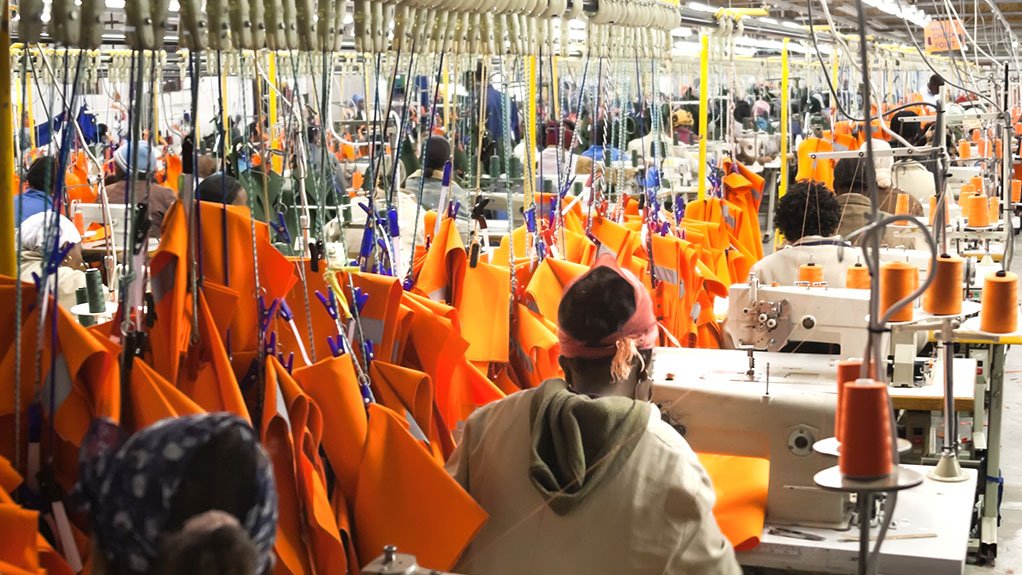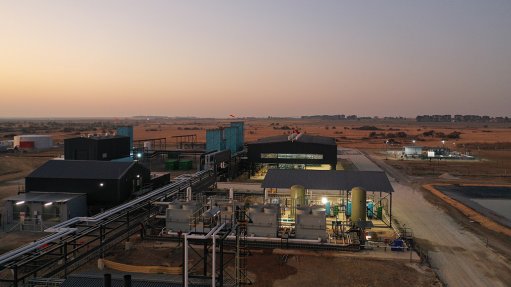Less than 1% of discarded textiles are recycled back into clothing
In South Africa, only about 13% of textiles are recycled at all, while less than 1% is recycled back into clothing, environmental services company Pinpoint Sustainability director Nicola Jenkin revealed during a presentation to textile sector stakeholders of findings and recommendations set out in nonprofit economic research institution Trade and Industrial Policy Strategies’ (Tips’) 'Designing Climate-Compatible Industrial Strategies for South Africa: The Textiles Value Chain' research report.
Speaking on September 22, Jenkin said “consumer throwaway culture” was responsible for “frightening” waste statistics in the sector, which she attributed to the concept of “fast fashion” and the constant desire among consumers to have new clothes.
Offcuts produced in the processing stage, as well as manufacturing damages, were also cited as major sources of waste.
Jenkin noted that the minimisation of production and manufacturing waste alone could result in as much as 24-million tonnes of greenhouse-gas emissions savings globally.
She proposed that proper recycling guidelines be drawn up for the textiles sector, and that a textile waste recycling target of about 25% should be set, while a reduction of 15% in clothing to landfill and incineration should be achieved.
Jenkin also proposed that textile products should be introduced and recognised in the Extended Producer Responsibility Regulations drawn up by the Department of Forestry, Fisheries and the Environment.
The research aims and objectives were to look at the long-term future for the textiles sector to ensure that it is climate compatible and environmentally sustainable, which feeds into the development of an industrial strategy for the textiles value chain.
Although more recent statistics were difficult to acquire, Jenkin determined that the textiles sector contributed about R70-billion to South Africa’s gross domestic product in 2016 – about 3% – and employed about 210 000 people in 2020, although this number had certainly declined since.
However, these figures did not factor in the extended value chain in terms of agriculture or petrochemicals, for example.
Although the sector is trending towards greater local production owing to the South African Retail-Clothing, Textile, Footwear and Leather (R-CTFL) Masterplan, which was signed in 2019, the sector remained predominantly export focused, with about 56% of textiles, 54% of clothing and 61% of footwear sales coming from exports.
The Covid-19 pandemic also contributed to an increase in online clothing and footwear sales, along with a significant increase in the second-hand clothing market.
Jenkin highlighted how the textiles industry was a major contributor to climate change and created significant environmental impacts through resource depletion, air and water pollutants, energy consumption and chemical use.
She noted that the cost of upgrading machinery and buying new technology to make better use of recycled content was prohibitive for many in the sector.
Additionally, challenges relating to accessing more environment-conscious feedstock owing to costly logistics networks was also a concern.
Of significant concern to manufacturers was the expected reduction in the production output if textiles’ longevity was increased as consumers would buy less.
She said it was pertinent for manufacturers to take the lead in assessing their current wastage rates and identify opportunities to minimise and recycle in-factory, as well as to procure fibres and textiles containing recycled content as much as possible.
Jenkin said those companies that imported textiles, including retailers, should stipulate a minimum level of recycled content, recyclability and repairability in the products they procured. This would involve the identification of suitable suppliers.
In terms of government’s role, Jenkin believed that the challenge of waste reduction needed to be better addressed in the R-CTFL masterplan.
Moreover, the government needed to facilitate the development of a design for recyclability and longevity guidelines, as well as better incentivise recyclability.
“Recyclability and longevity guidelines already exist overseas; could they maybe be adapted?” Jenkin asked.
Article Enquiry
Email Article
Save Article
Feedback
To advertise email advertising@creamermedia.co.za or click here
Comments
Announcements
What's On
Subscribe to improve your user experience...
Option 1 (equivalent of R125 a month):
Receive a weekly copy of Creamer Media's Engineering News & Mining Weekly magazine
(print copy for those in South Africa and e-magazine for those outside of South Africa)
Receive daily email newsletters
Access to full search results
Access archive of magazine back copies
Access to Projects in Progress
Access to ONE Research Report of your choice in PDF format
Option 2 (equivalent of R375 a month):
All benefits from Option 1
PLUS
Access to Creamer Media's Research Channel Africa for ALL Research Reports, in PDF format, on various industrial and mining sectors
including Electricity; Water; Energy Transition; Hydrogen; Roads, Rail and Ports; Coal; Gold; Platinum; Battery Metals; etc.
Already a subscriber?
Forgotten your password?
Receive weekly copy of Creamer Media's Engineering News & Mining Weekly magazine (print copy for those in South Africa and e-magazine for those outside of South Africa)
➕
Recieve daily email newsletters
➕
Access to full search results
➕
Access archive of magazine back copies
➕
Access to Projects in Progress
➕
Access to ONE Research Report of your choice in PDF format
RESEARCH CHANNEL AFRICA
R4500 (equivalent of R375 a month)
SUBSCRIBEAll benefits from Option 1
➕
Access to Creamer Media's Research Channel Africa for ALL Research Reports on various industrial and mining sectors, in PDF format, including on:
Electricity
➕
Water
➕
Energy Transition
➕
Hydrogen
➕
Roads, Rail and Ports
➕
Coal
➕
Gold
➕
Platinum
➕
Battery Metals
➕
etc.
Receive all benefits from Option 1 or Option 2 delivered to numerous people at your company
➕
Multiple User names and Passwords for simultaneous log-ins
➕
Intranet integration access to all in your organisation



















